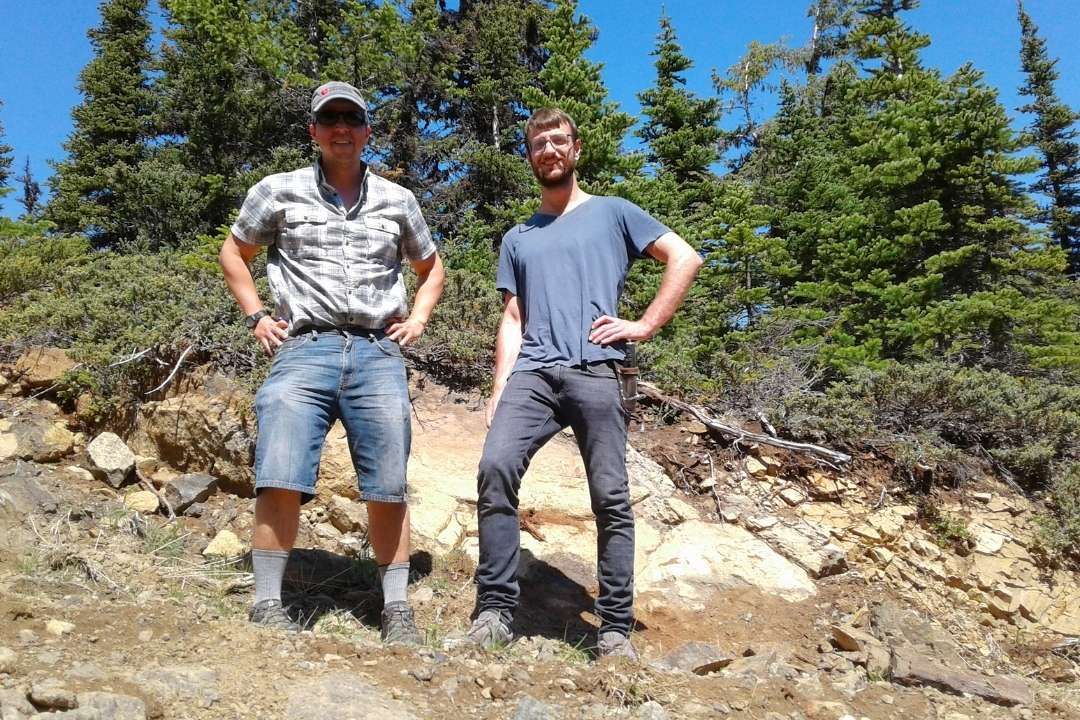
Imaging Earth’s crust reveals natural secret for reducing carbon emissions
When Simone Pujatti dove deeply into the makeup of rocks from the ocean floor, he did not find what he was expecting — he found something much more interesting, with implications for mitigating climate change.
By Joanne PaulsonUsing the Canadian Light Source (CLS) at the University of Saskatchewan and its BMIT-ID beamline, he discovered much larger pores in samples from the Earth’s crust than predicted.
“I expected nanometer-sized pores, whereas I ended up finding pores up to 200 microns — so several orders of magnitudes larger,” said Pujatti, a scientist in the University of Calgary’s Department of Geoscience who recently defended his PhD. “This was very, very puzzling to me.”
Three-dimensional CLS imaging techniques allowed him to see the rocks’ internal structure. There, he found the pores in a mineral called olivine, which is made up largely of silica and magnesium.
As in other geologic systems, he thought the olivine would form new minerals — basically clays — as it dissolved “but I didn’t see that,” he said. “I could only see pores."
“Finally, I realized the types of fluids that percolated through these rocks were too cold to lead to the formation of new minerals." The ‘culprit’ was simply sea water.
“Classically, we always consider the oceanic crust as a sink for magnesium,” he said. “Instead, interactions between fluids and these olivine-rich rocks release magnesium.”
Pujatti estimated the amount of magnesium liberated from these rocks on the sea bed at about 15 gigamoles or about 364,000 tons annually, “which is significant” not just because of the amount but because magnesium can combine with carbon, leading to its sequestration.
And so, while his pore-size discovery was important from a pure science standpoint, it also brought a revelation — that his research could lead to practical carbon sequestration applications.
“Global warming is potentially the biggest challenge humanity will face,” he said. “We know carbon is a greenhouse gas and it leads to global warming.”
Pujatti added that drilling at the sea bottom is expensive and difficult but rock from the ocean floor is found in mountainous areas, including many in British Columbia and Newfoundland, due to tectonic plate shifting. So, “even without exploring the depths, we could start looking at exploiting these pores to sequester carbon on land.”
Pujatti said he was honoured to receive the ocean floor samples for his work and that his research would have been impossible without the technology and assistance available at the CLS.
“I am really grateful to all CLS staff. They helped massively.”
Pujatti, Simone, Oliver Plümper, and Benjamin M. Tutolo. "Weathering-driven porosity generation in altered oceanic peridotites." Earth and Planetary Science Letters 604 (2023): 118006. https://doi.org/10.1016/j.epsl.2023.118006
Photos: Canadian Light Source | Pujatti
Media Relations:
Victoria Schramm
Communications Coordinator
Canadian Light Source
306-657-3516
victoria.schramm@lightsource.ca
